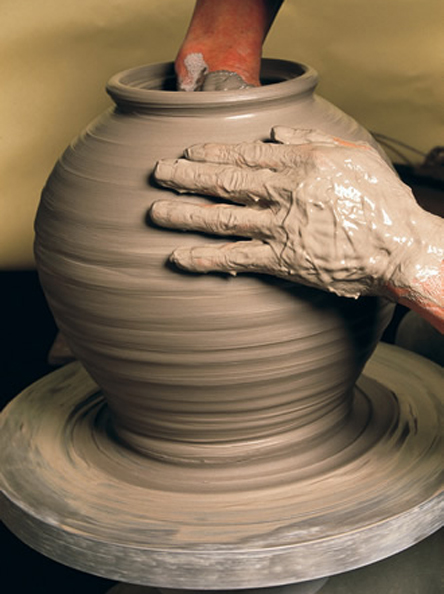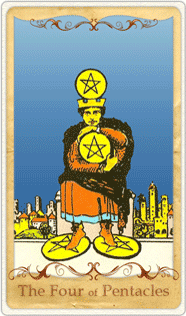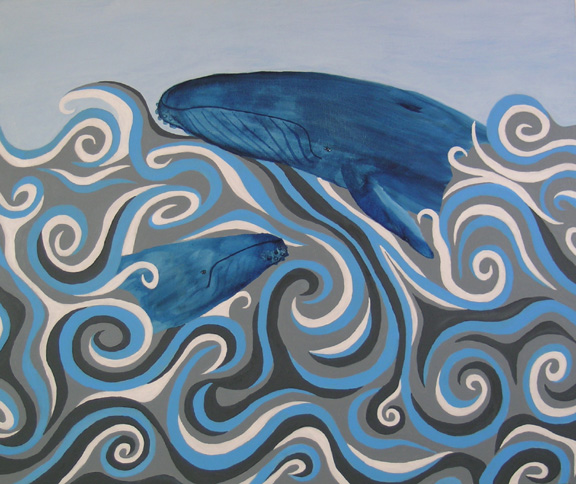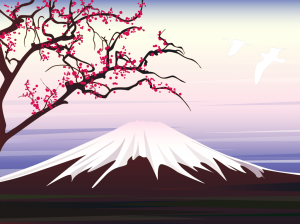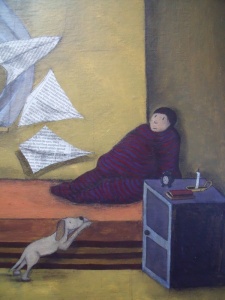 I am very small minded at the moment. I notice it in the interstitial moments of waiting for buses or metro trains, in the small gap between eating dinner, washing up and going to bed. I notice it less when I am busy or moving, but it is still there. Or rather, I am still inside it, this limiting constraint. Even to notice is not to step outside of the boundary line of the small minded. It is rather to bounce like a squash ball, hard and fast and dangerous to the eye that notices, unless one can get one’s racquet to the hit.
I am very small minded at the moment. I notice it in the interstitial moments of waiting for buses or metro trains, in the small gap between eating dinner, washing up and going to bed. I notice it less when I am busy or moving, but it is still there. Or rather, I am still inside it, this limiting constraint. Even to notice is not to step outside of the boundary line of the small minded. It is rather to bounce like a squash ball, hard and fast and dangerous to the eye that notices, unless one can get one’s racquet to the hit.
Small minded. It’s a description of being unable to think ‘big’ thoughts (kindness, patience, creative – all are ‘big’ in that they are big-hearted). Thoughts have a shape and it is trigonometric. Or rather thoughts have space into which you allow them to take shape and this space has a width, breadth and depth. It also has a time stamp, a double relation to time. The immediate of the thought, and the longer mood in which the small minded lingers.
Sometimes you can allow thoughts to expand. And other times you keep them in a box. I read an amazing piece of writing once about The Man Box. The Man Box is the box in which all other species live. It is a violent, small space, at its worst. At its best, it is still defined by the male of the human species, and for men, it is a better fit (although still violent, still small) than all others, including women, nonhumans, trees. The Man Box is white, of course (blood red on the inside). The Man Box believes, like the Tardis, it is somehow limitless, powerful, mythic, expansive. But the Man Box is a trick of the eye (of the mind).
Behind the man box, though, is the box of tricks that is the mind. It is strange, not quite funny, but sometimes incomprehensible, how the same mind can be such a different size, can be so wide and expansive, or so narrow and restricted. A thing this allows one to notice, if one can notice, at least, is that the mind is constructed, as are all perceptions. How ugly things can be seen as beautiful (for example, the ‘Boring Buildings’ in Jeffrey Sarmiento’s glass work, currently in exhibition at the National Glass Centre, I visited yesterday).
This small mindedness is the most limiting of all afflictions short of serious illness. Even then, it is somehow worse, guileless, restricting in ways that are fundamentally disappointing and achingly bad, more so than any long-term physical disability. I’ve ‘cripped’ my own opportunity and vitality, the disability scholars such as Garland-Thomson might say.
Small mindedness is anger. But not even that. Not as powerful as that. It is frustration with late running busses. It is frustration with overrunning speakers at the fortnightly seminar series. It is rigid scheduling. It is a tremolo fear of starting (anything). It is the tick of the second hand as something that irritates. Small mindedness is filled with the small emotions. Irritation. Frustration. It is sitting facing away from the window. It is fake plastic wood to run your finger over, imagining the real grain, dust, splinter. Even a splinter would be better.
It is not enough to change your life over. It is Charlie Brown’s sighs. It is far, far from the Madding Crowd, among the mass-produced vases and plastic plants of a Costa Coffee on a nameless high street. It is a reason not to mark one’s sights on sky above. It is a summary, not the exegesis. It is X-Factor, not the Greek Chorus.
The cure for a small mind begins, in fact, in the stomach. Space needs to be made in the physical body, and the first place to begin is to empty oneself out of the ingested, to regain a sense of lightness. This is only a preliminary, though, a warm-up, the fast is the trigger or can be a key to the door which needs to be pushed open. This is how fasts are used, they are utilities towards giving the mind some play of energy, some freedom.
And once the fast has begun in the body, then one can begin with the mind. Perhaps one becomes small minded by taking in too much, weighing down the thought space, filling it up. Expelling words is a good way to get the flow moving again. Writing, singing. A small mind is thinking that sounds like a car not starting. Once the engine is running again, a flow begins. Get things flowing out, feel the mind begin to be fluid again. Fluid or gas (gas is more meditative, fluid is more expressive. Fluid comes first, before it can be turned into the gas or air of thought space.)
Write. Sing. Don’t try to think too much. Imbibe sencha or bancha, sip only. Follow the ritual. Sit without crossing the legs. Drop the shoulders. Don’t try to remember too much either. The four most important words for flowing: let’s see what happens. Rub the palms of the hands around the balls of the knees. Feel how they fit. Feel the smallness of the space, the gap, between the perfect spooning grip of your hands on your knees. And then lift the hands, splay the fingers, feel the space. Now do this with your mind. Close your eyes. Roll your eyes upwards as you move the hands. Drop the shoulders again. Breathe. Always breathe.
Don’t try to think a thought that you have expanded the space for thoughts already. It is a much slower process than this, and thinking that thought—looking at the interior wall-space of your mind to check it’s dimensions as if you were measuring for curtains—simply closes the space back in. Trying to think bigger thoughts cannot make the space in which your thoughts exist bigger. This is the tricky part of changing thought space: the space for thoughts being your mind, of course.
But it also shows you that your mind is not your thoughts. The mind is only the space in which your thoughts exist. Perhaps the mind is tired of the battering it has been getting. Perhaps it is flagging, folding in, shored up over time by the struts of habit and identity you’ve thought into place, held there with nails and dovetails. The thoughts that aren’t even yours but inherited, like wallpaper, like the furniture you carry around with you everywhere. Rather than try to keep all of this standing, try to keep your mind standing, why not let it fold in, collapse, let the walls come down. What’s outside that’s scaring you? What’s necessary about walls? If you are afraid of insanity, take a peek outside the window first. I promise you, there are no dead faces looking back in. This is not a Hollywood film.
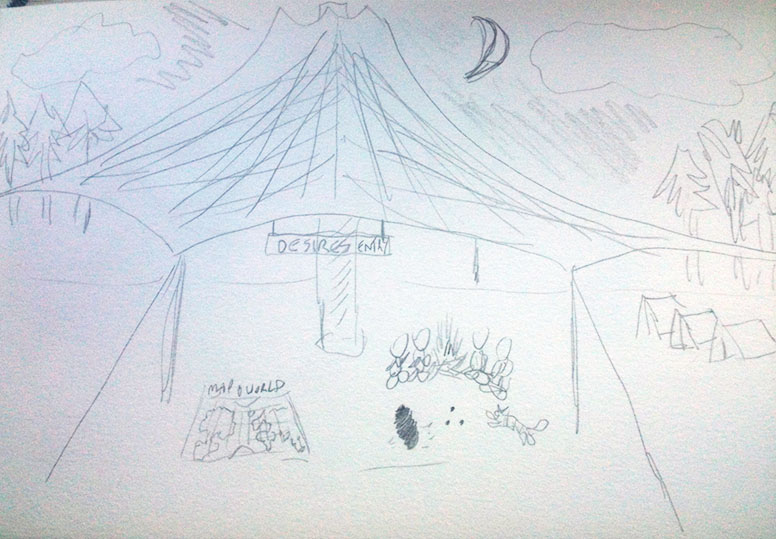
Perhaps your mind can be more like a marquee (this could be a half-way house, a half-house). It has only a top for essential protections. You can hear the rain on this when it falls. That beautiful chaosmos of a million unplanned drops of which you were one, once, touching you without invite. The sides are open, the wind, the pungency of the pines, the animals that scratch at your tent in the night (small minded, you kicked out at them, remember?) can all walk in, through, mingle with the life going on there, your myriad insights and ideas and interventions.
Over here: multiple memories around the campfire. Over there: your ideas map. There: the whirling egg, black, impenetrable, all the things you’ve stored away and tried to forget, dining at your campfire like a welcome guest. And there: the animals and other creatures (even some humans) who find shelter in your thought space. When the walls of your thought space come down, this is what happens. Your thoughts breathe, remain open. The night is outside. You can always see the moon. You sleep to the rhythms of the world as it whips you around time.
So begin. Begin not by thinking your mind bigger, but by perceiving your thought. Take notice of the size of the thoughts. Intuit from their size the size of the space that must be around them. And imagine. Perceive. Turn towards the window. Breathe bigger breaths. Draw, sing, write. Let the river that runs along the bottom of the valley outside of this big marquee lull you to peace. Out of that peace, begin to see a mind without walls, only open sides, a welcoming space, one that does not need defences. This is where you dwell. This is where you sleep.
Image of building (c) Jeffrey Sarmiento
